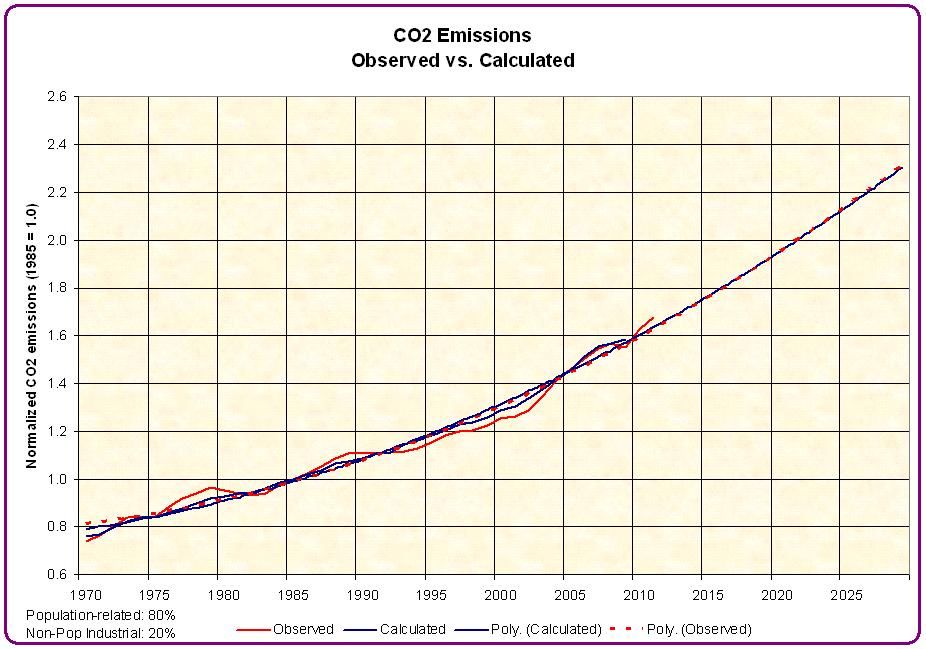Environment & Energy
In reply to the discussion: Updated: 80% of world CO2 emissions are related to population levels. [View all]GliderGuider
(21,088 posts)I said above that CO2 levels are "attributable to" population levels very deliberately, in order to hand-wave past the details to get to the basic point: "It's the people, stupid!".
My methodology assumes that at this moment in time there is a certain irreducible set of GHG-producing activities that go along with being alive. It's sort of a birthright, our individual share of the common human life-support system - a system that has to expand by a set amount each time an Average Human™ is born. Some of that irreducible set of activities includes eating (which implicates the 20% or so of the world's fossil fuels that support the Food System™), housing to the standard a "world average" person with a $10,000 annual income can afford, some transportation, some clothing and a modicum of life-supporting Stuff™. Individuals are born into different circumstances, of course, but over the course of a year the 75 million new individual circumstances are blenderized to an average - at least as far as CO2 production is concerned. When I say "80% of CO2 production is attributable to population" this is what I'm talking about. The raw population number is being used as a proxy for all the implied activity that is required to sustain an average human life in the late 20th/early 21st century.
Then there's the other stuff - industrial production that isn't distributed evenly across the world's population. You might think of it as "System Support Consumption". That might include Manhattan skyscrapers, military equipment, airliners etc. The numbers associated with these activities would show far less correlation to global population numbers, but they definitely contribute to greenhouse gasses. This is what I tried to model by using global steel and cement production.
So, what I found is that 80% of the CO2 is being produced by activities that are very broadly (even universally) distributed across the population while the last 20% isn't. This means that CO2 levels will track population numbers quite closely as long as the current situation holds. In order to preserve out population numbers while still reducing our CO2 emissions significantly, we would have to significantly break the stranglehold that fossil fuels have on our daily lives, and we would have to do it in a global manner. I don't think this is in the cards, at least not for a Global Empire™ of 7 billion people, all of whom have firm expectations for the future based on an historical energy anomaly - cheap, abundant fossil fuels.
The graph below - which includes projections out to 2030 - shows how close the calculated combination comes to matching our observed emissions. It uses the same steel&cement numbers, normalized for the difference in the amount of CO2 a tonne of each material generates. The fact that the two trend lines are identical over a 60 year span is the best indication I've found yet that the methodology is sound.
